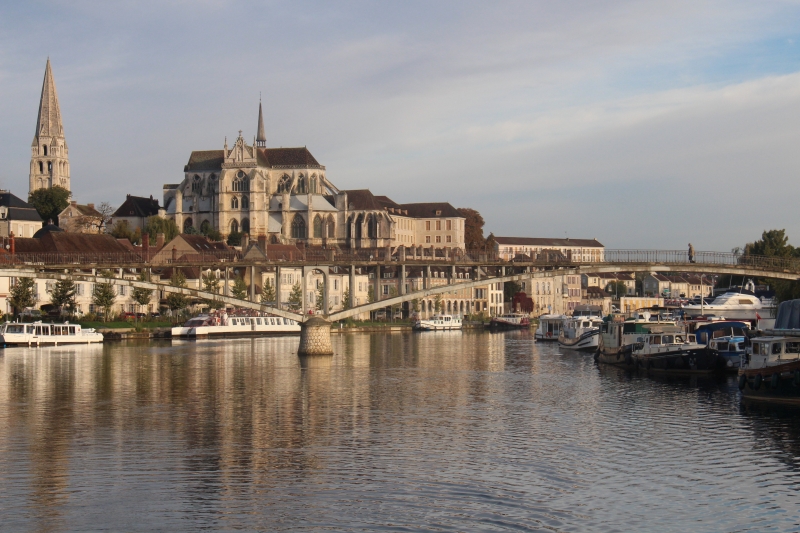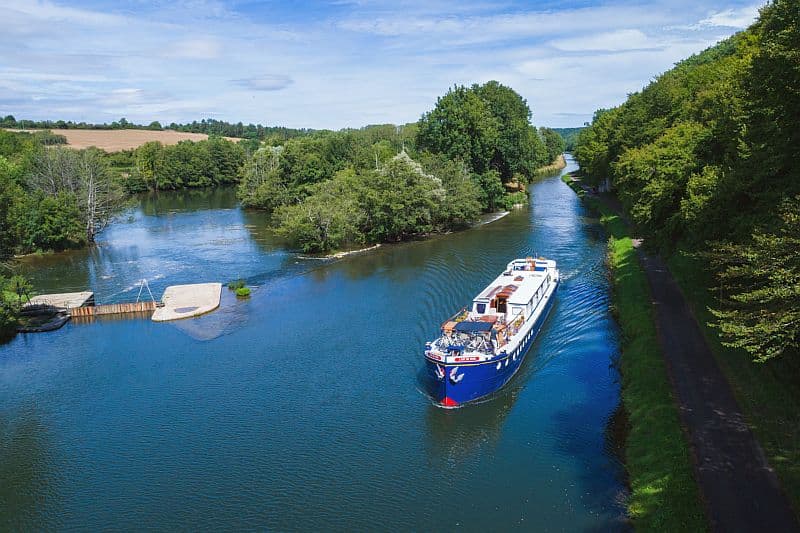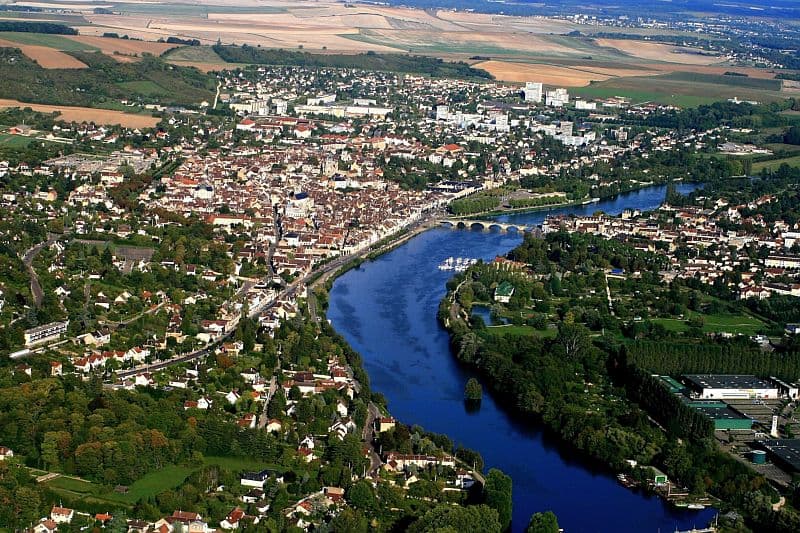The navigable River Yonne, feeding into the Paris basin, is one of the most important rivers in Burgundy, extending from Auxerre, where it joins the Canal du Nivernais, to its confluence with the Seine at Montereau. It begins its journey in the central granite highlands of the Morvan Natural Park before flowing through Clamecy to Auxerre, Joigny and on to Sens before flowing into the River Seine.
The Ultimate Guide to the River Yonne


Montereau-Fault-Yonne owes its name to its geographical position with the confluence of the River Yonne and the Seine Rivers. The town is split in two by the rivers, ville-basse – the lower part of the town – situated on the southern shore and Surville on the hill to the north. The old town centre is located in the ville-basse while Surville itself is a mixture of high rise buildings, erected in the 1950s and 60s and is in many ways a typical cité in the Île-de-France.
Sens, situated on the right bank of, and on an island in, the River Yonne was the capital of the Senones, a Gallic tribe and was later a Roman metropolis. It was the meeting point of six great highways when the Romans built theatres, circuses, amphitheatres, triumphal arches, and aqueducts in the town.
The Cathedral of St-Etienne in Sens is one of the largest and finest Gothic buildings in France. Work commenced in 1140 and was completed in about 1500. It was largely built by William of Sens, who also reconstructed part of Canterbury Cathedral in England. Unfortunately, much of the rich sculptural decorative work of the west front was destroyed during the French Revolution. Inside, the beauty of the spacious three-aisled nave, with its bold vaulting, is enhanced by the fine 12th-17th century-stained glass windows.

To the south of the cathedral are the official buildings, dating from the 13th century and restored by Viollet-le-Duc, the architect responsible for restoring France’s crumbling cultural heritage in the 19th century. The old judgment hall and the dungeons have also remained intact. In the former is a collection of fragments of sculpture from the cathedral. On the first floor is the synod hall, vaulted with stone and lit by beautiful grisaille windows. A Renaissance structure, which also dates from that period, connects the buildings with the archiepiscopal palace.
Villeneuve-sur-Yonne was founded in 1163 by Louis VII of France to protect the kingdom of France at the boundary with the separate duchy of Champagne. A partly intact defensive wall, built during the 12th century, encircled a royal keep which was one of the eight residences of the French kings. There are two main entrance gates to the city. The Gate (or Porte) of Joigny, rebuilt in the 16th century, and the Gate of Sens which predates it by three hundred years and is similar in appearance.
The impressive, covered city market was built during the 19th century by Paul Sédille. A Neolithic monument, called Pierre-Fritte or sometimes Plaine-des-Egriselles, consisting of a single large standing stone, is situated on the bank of the River Yonne.

Joigny sits on the edge of the Chablis wine growing area. The historic part of the town is built on the side of a steep hill overlooking the River Yonne. Much of its medieval nature has been retained with narrow cobbled streets, courtyards of flowers, several timber-framed 15th and 16th century houses and churches and the 10th century gate of St. Jean, a remnant of the original fortified City Wall.

Ready to Explore the Historic Canal du Centre?
Guests aboard luxury hotel barge L’Art de Vivre will have the opportunity to cross the River Yonne and, from time to time, merge with the River Yonne itself. For more information on our itineraries and the rest of our collection of luxury hotel barge cruises, why not order a free copy of our brochure today or speak to a member of our team directly using our handy Contact Form.
 English
English
 Spanish
Spanish French
French German
German Norwegian
Norwegian Portuguese
Portuguese Swedish
Swedish Italian
Italian Russian
Russian Simplified Chinese
Simplified Chinese Japanese
Japanese